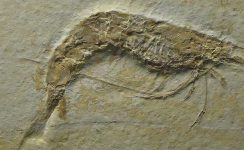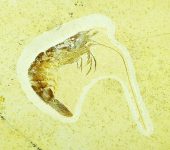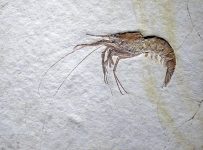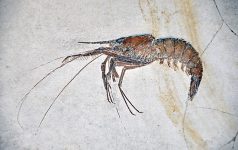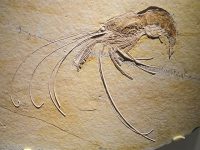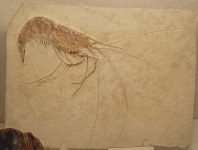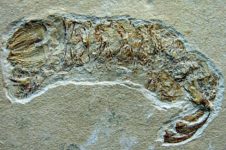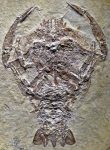Fossil Shrimp
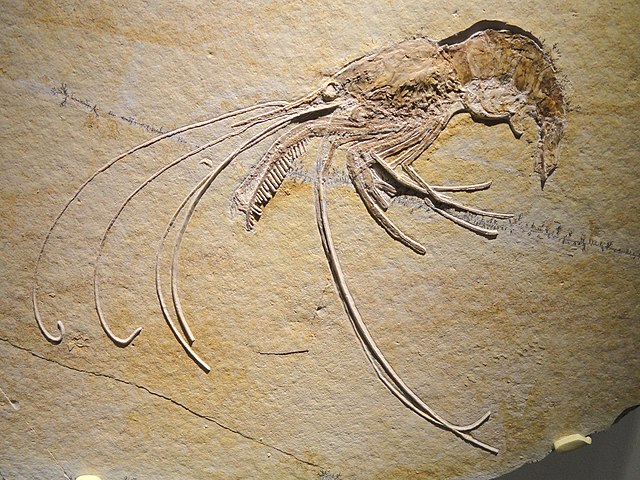
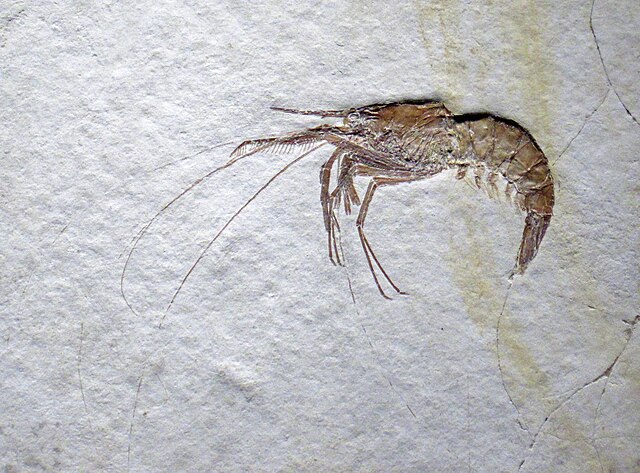
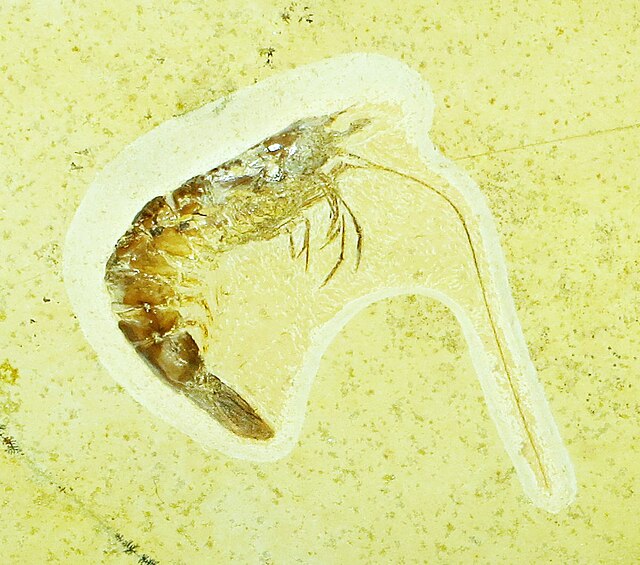
Fossil Shrimp
Fossil shrimp are remnants of ancient marine life that offer valuable insights into the evolutionary history and ecological dynamics of marine ecosystems spanning millions of years. These crustaceans, belonging to the order Decapoda, have left a rich fossil record that helps paleontologists reconstruct past environments, study evolutionary adaptations, and understand biodiversity changes over geological time scales.
Evolutionary History
Shrimp belong to the class Malacostraca within the phylum Arthropoda, a diverse group that includes crustaceans, insects, and arachnids. Fossil evidence suggests that early shrimp-like organisms appeared in the Cambrian period over 500 million years ago. However, true decapod shrimp, characterized by their ten-legged (decapod) body plan, emerged later in the fossil record during the Mesozoic era, around 250 million years ago.
During the Mesozoic era, which spanned from approximately 252 to 66 million years ago, shrimp diversified alongside other marine organisms in response to changing environmental conditions and ecological opportunities. They inhabited various marine environments, from shallow coastal waters to deep-sea habitats, and played important roles as scavengers, predators, and prey in marine food webs.
Anatomy and Morphology
Fossil shrimp exhibit a range of body forms and adaptations reflective of their diverse ecological roles. Typically, shrimp possess a segmented body with a distinct head, thorax, and abdomen. Their bodies are encased in a protective exoskeleton composed primarily of chitin, a durable organic material that contributes to their preservation as fossils.
One of the defining characteristics of decapod shrimp is their five pairs of walking legs, with the first pair often modified into claws (chelae) for capturing prey or defending against predators. Fossil shrimp specimens often retain these appendages, providing clues about their feeding habits, locomotion, and behavior in ancient marine environments.
Fossilization Process
The fossilization of shrimp, like other marine organisms, typically occurs under specific geological conditions that favor preservation. Soft tissues decay rapidly after death, but the hard exoskeleton of shrimp can be fossilized under certain circumstances. Rapid burial in sediment layers, often in anoxic (oxygen-deprived) conditions, helps protect the exoskeleton from scavengers and decomposition. Over time, minerals such as silica or calcium carbonate can replace the organic material of the exoskeleton, forming a fossilized impression or cast known as a “carbonate concretion.”
Fossil shrimp can also be preserved as “impressions” or “molds” in sedimentary rock formations, where the shape and texture of the exoskeleton leave a negative impression that later fills with minerals, creating a three-dimensional replica of the original organism. Such fossils provide detailed anatomical information, including body shape, appendage structure, and sometimes even internal organs under exceptional preservation conditions.
Paleoecological Insights
Studying fossil shrimp offers significant insights into past marine ecosystems and their dynamics. By analyzing the distribution, diversity, and abundance of fossil shrimp species within sedimentary rock formations, paleontologists can reconstruct ancient habitats, including coastal zones, estuaries, and deeper offshore environments. Fossil shrimp often co-occur with other marine fossils such as mollusks, fish, and marine reptiles, providing a comprehensive view of prehistoric food webs and ecological interactions.
Fossil shrimp also serve as valuable bioindicators for paleoenvironmental reconstructions. Changes in shrimp diversity and community structure over geological time can signal shifts in oceanic conditions, such as sea level fluctuations, temperature variations, and the evolution of marine ecosystems in response to environmental pressures.
Significance in Paleontology
The study of fossil shrimp contributes to our understanding of evolutionary patterns, biogeography, and the impact of mass extinction events on marine biodiversity. Shrimp fossils from different geological epochs reveal evolutionary trends, adaptations to changing environmental conditions, and the role of extinction events in shaping decapod diversity over millions of years.
Moreover, fossil shrimp play a crucial role in stratigraphy and geological dating. They serve as index fossils—species that are geographically widespread and limited to a specific time interval—helping geologists correlate sedimentary rock layers across different regions and establish relative and absolute age dating techniques.
Conservation and Future Research
Preserving and studying fossil shrimp are essential for advancing our knowledge of Earth’s geological history and biodiversity. Ongoing paleontological research continues to uncover new shrimp species, refine evolutionary relationships, and explore the ecological significance of decapod crustaceans in ancient marine ecosystems.
Conservation efforts are crucial to protecting fossil sites and ensuring their accessibility for future scientific study. By safeguarding these valuable resources, scientists can continue to unravel the mysteries of fossil shrimp and their contributions to our understanding of life’s evolutionary journey on Earth.



